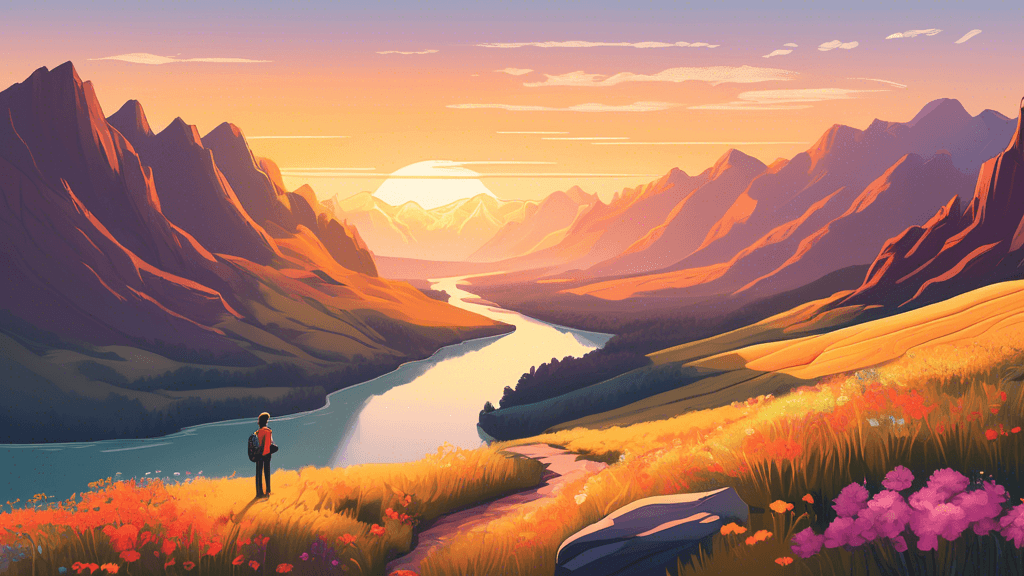
Discovering Depth: Mastering Landscape Photography Through Layers
Share
Understanding the Power of Layers in Landscape Photography
Landscape photography is more than just capturing vast tracts of nature; it’s about conveying the profound depths and emotions of the environment. One of the key techniques in a landscape photographer's repertoire is the use of layers. But what does it mean to incorporate layers, and how can mastering this technique transform your photographs from simple snapshots to compelling stories?
What Are Layers in Landscape Photography?
Layers in landscape photography refer to the composition technique of organizing elements in a scene into visually distinct levels or planes. These layers can consist of various natural features such as the foreground, middleground, and background, including elements like trees, mountains, clouds, and more.
The purpose of layering is to add depth—to make the viewer feel as though they could step into the photo. It’s about guiding the observer’s eye through the image and highlighting the relationship between the different parts of the scene.Why Are Layers Important?
Layers do more than just enhance the visual appeal of an image; they help to tell a story. By effectively using layers, photographers can:
- Improve Depth Perception: Layers create a sense of three-dimensionality, making the two-dimensional image feel expansive and immersive.
- Guide the Viewer’s Eye: Strategic placement of layers can direct the viewer's attention along a specific path through the image, emphasizing important compositional elements.
- Add Scale and Context: Including elements like people or wildlife in different layers can provide a sense of scale and give context to the vastness or the detail of the environment.
How to Master Layering in Your Compositions
To use layers effectively in landscape photography, one must consider the following:
- Choose a Strong Foreground: The foreground is your introduction to the scene. Elements such as rocks, plants, or water bodies can create an engaging entry point.
- Consider the Middleground: This area connects the foreground and background, often providing context and supporting the main subjects in the foreground.
- Complement with a Compelling Background: The background should not only complement the other layers but also stand on its own when necessary. This could be a dramatic skyline, mountain range, or a vibrant sunset.
Practical Tips and Techniques
Mastering layers requires practice and a keen eye for detail. Here are some practical tips to enhance your layering skills:
>,- Use a Tripod:ong> Stability is key when capturing layered compositions to ensure sharpness across all layers. ,arket.>
- Employ Depth of Field: Experiment with different apertures to find the right balance between having the foreground sharp and keeping the background recognizable but not overpowering. Data.gov>
- Consider the Light: gh at ensures >ive As mentioned earlier, no layer operates in isolation. Think about how light interacts with different layers, particularly during golden hours, to create a truly mesmerizing scene. Modify Your Perspective: Sometimes, simply changing your viewing angle or position can reveal new layers or enhance existing ones, giving a fresh perspective to the composition.
Inspirational Insights
Notable landscape photographers often discuss the emotional impact of layering. Ansel Adams, famed for his monochrome landscapes, once said, A good photograph is knowing where to stand.” This simple yet profound advice holds especially true when it comes to creating layered compositions that resonate with viewers.
Conclusion
Layering is not just a technique; it’s an art form that requires patience, practice, and a deep connection with the environment. As a photographer, your ability to see and interpret the landscape in layers is crucial in translating the beauty and depth of the natural world into a photograph.
If you are passionate about taking your landscape photography to the next level, experiment with these techniques and consistently challenge your creative boundaries. Observe, experiment, and let the landscape tell its story through your lens.
Are you ready to explore the art of layering in your landscape photography? Connect more deeply with your surroundings and bring a new dimension to your images.





